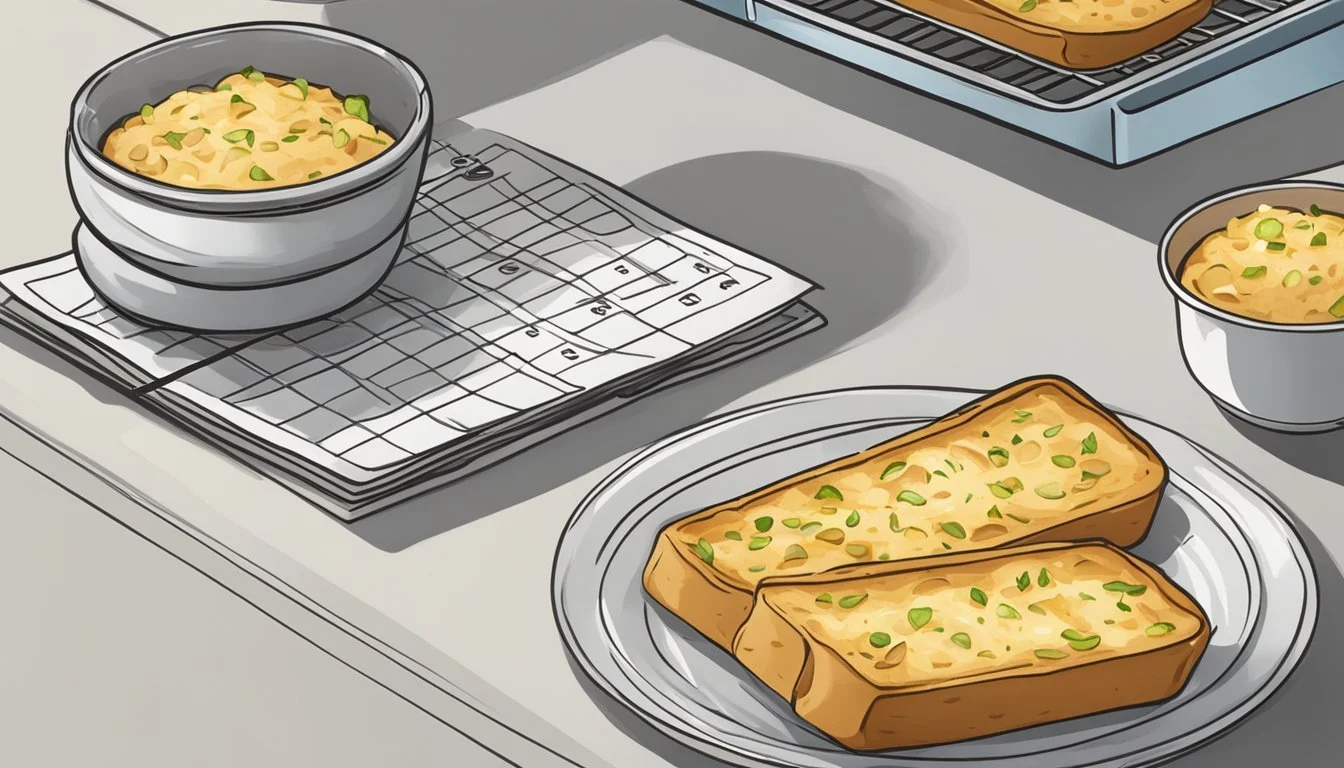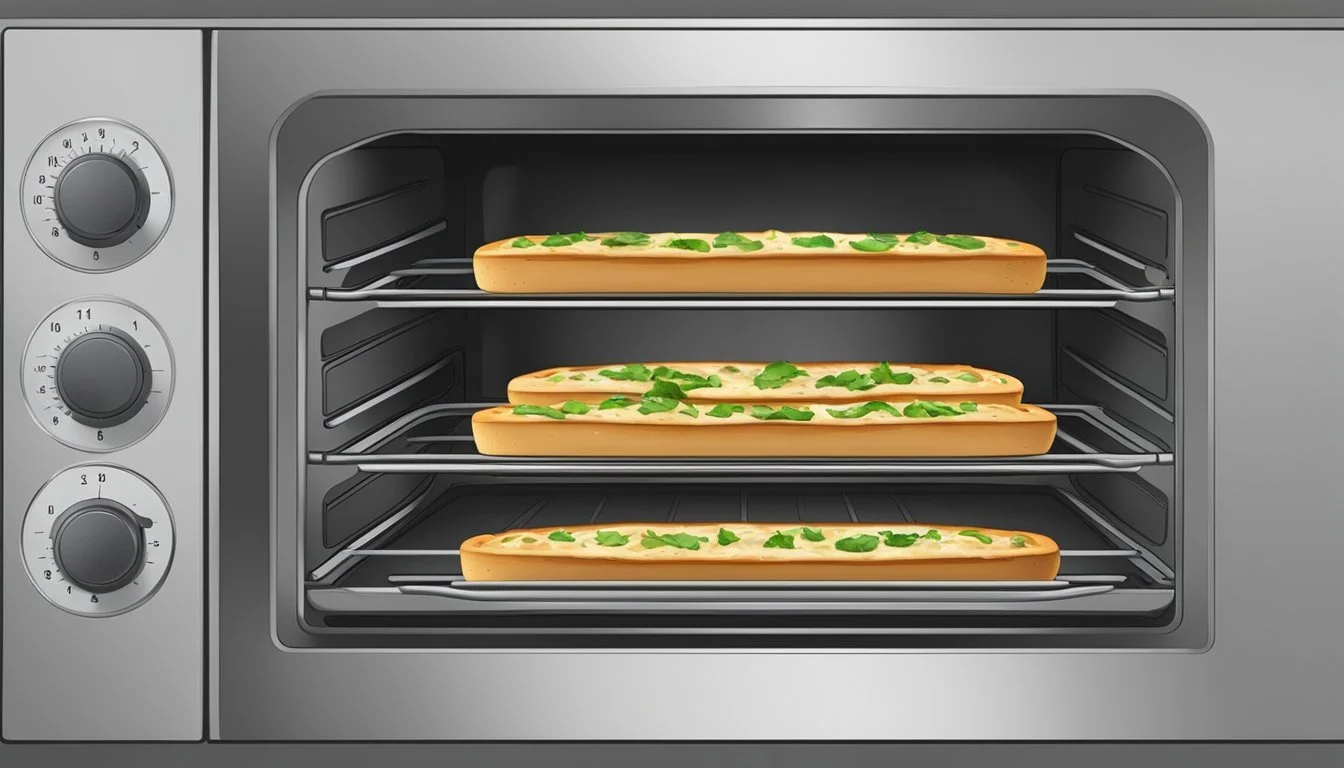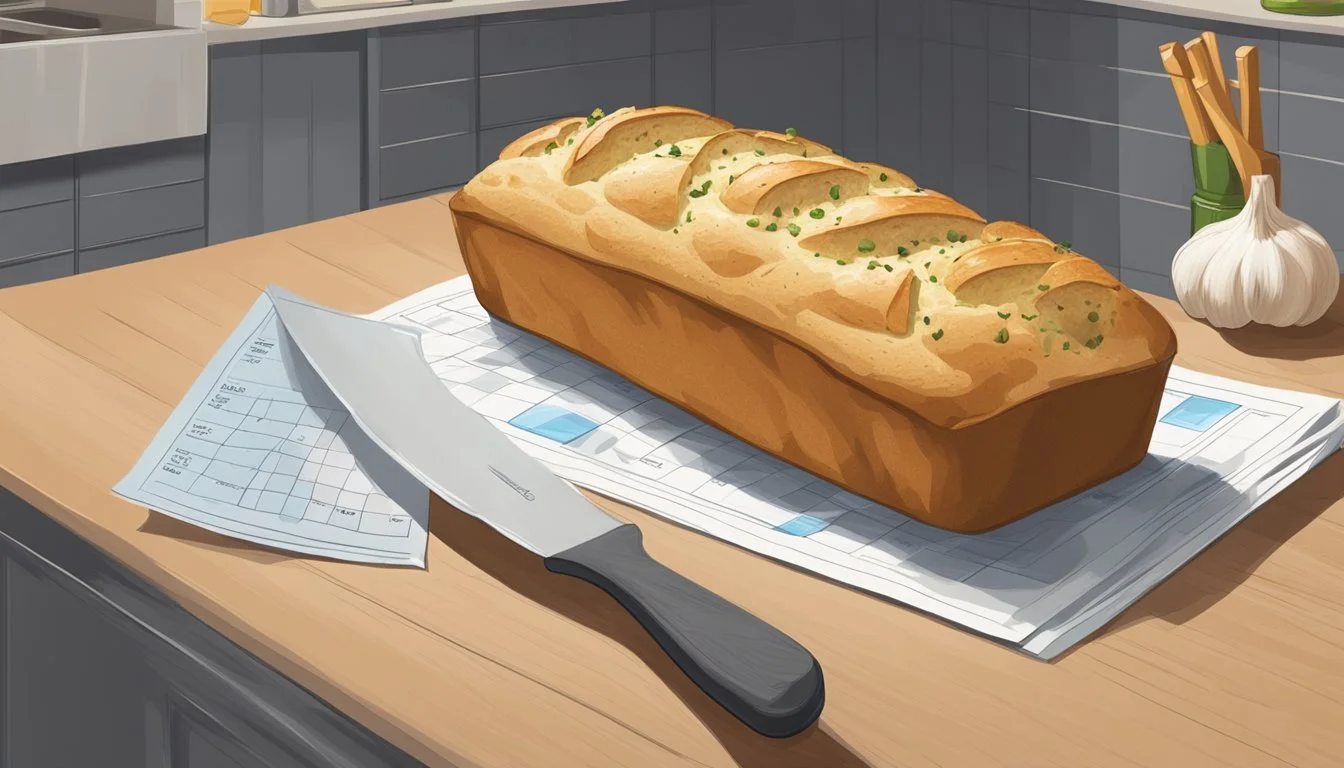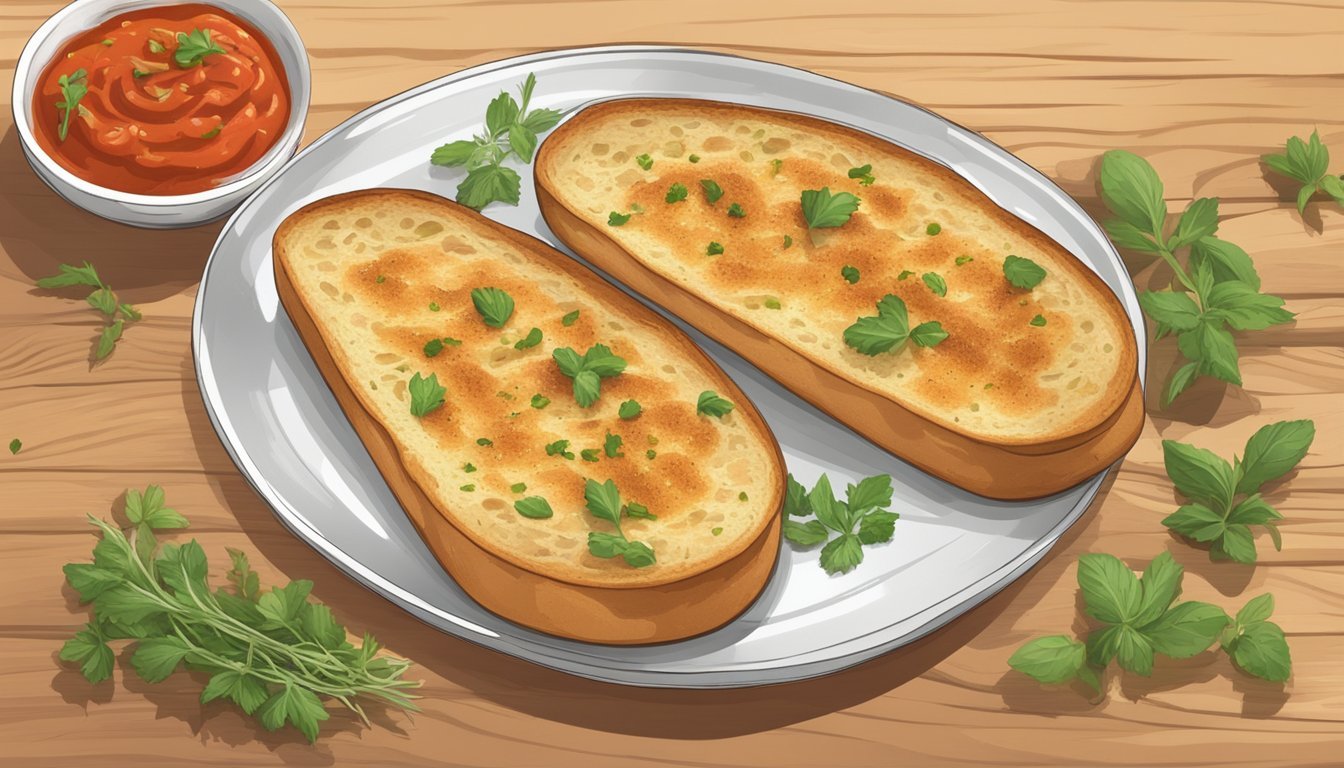How Long Does Garlic Bread Last?
Shelf Life and Storage Tips
Garlic bread is a beloved accompaniment to many meals, but its shelf life can vary based on storage methods. When left out at room temperature, garlic bread will typically last for 1 to 2 days before it begins to lose its quality and freshness. If refrigerated, garlic bread can remain good for up to 3-5 days, maintaining its tasty appeal. For those looking to preserve garlic bread for a longer period, freezing it is a reliable option, extending its life for up to 3 months.
To ensure garlic bread stays delicious, proper storage techniques are crucial. Wrapping it tightly in plastic wrap and placing it in a freezer bag helps prevent freezer burn and keeps it fresh longer. It's also important to date the bag, so you know how long it has been stored.
Freshness is key to enjoying garlic bread at its best. Fresh garlic bread will have a softer texture and a more robust flavor. As it ages, the bread can become hard and lose its savory garlic taste. By following the best storage practices, you can enjoy every last crumb of this delightful dish.
Overview of Garlic Bread
Garlic bread is a beloved accompaniment to many meals, known for its crisp texture and rich flavor. This section explores the essential components of garlic bread and popular variations enjoyed around the world.
Ingredient Profiles
Garlic bread typically comprises a few simple yet flavorful ingredients. Key ingredients include fresh garlic or garlic powder, which provides a robust, aromatic base. Butter and olive oil are often used either separately or together; butter adds a creamy richness, while olive oil introduces a lighter, healthier option.
Herbs such as parsley play a crucial role, adding freshness and a burst of green color. Cheeses like mozzarella and parmesan are sometimes incorporated, enhancing the bread's texture and taste profile. Traditional choices for the bread base are Italian bread or baguettes, which offer the perfect balance of crusty exterior and soft interior.
Popular Variations
Garlic bread variations cater to diverse palates and dietary preferences. Homemade garlic bread allows for customization, such as adjusting the amount of garlic for a subtler or more intense flavor. Store-bought garlic bread often offers convenience and consistency, pre-made and ready to heat.
Different regions have unique takes on garlic bread. For instance, Cheesy garlic bread features a generous topping of mozzarella or parmesan, while herbed garlic bread includes additional herbs like basil or oregano. Some recipes substitute butter with olive oil for a Mediterranean twist, appealing to those seeking a dairy-free option.
Storing Garlic Bread
Proper storage of garlic bread can significantly extend its freshness and flavor. Depending on whether you need short-term or long-term storage, the methods and materials vary considerably.
Short-Term Storage
For storing garlic bread short-term, keeping it at room temperature is often ideal if you plan to consume it within 1-2 days. Place it in a bread box or wrap it in aluminum foil to prevent it from drying out. Avoid refrigerating the garlic bread as it can cause the bread to become hard more quickly. If the weather is hot and humid, consider using an airtight container for added protection.
Long-Term Freezing
To freeze garlic bread, wrap it in aluminum foil or plastic wrap. Placing it in a plastic bag can offer additional protection from freezer burn. When ready to consume, it's advisable to thaw frozen garlic bread in the refrigerator overnight. After thawing, reheat it in the oven at 350°F (180°C) for about 10-15 minutes until warm and crispy.
Proper Wrapping Techniques
Effective wrapping is crucial for maintaining the quality of garlic bread. Use aluminum foil or plastic wrap to protect the bread from air and moisture. For sliced garlic bread, wrap each slice individually before placing them in a larger plastic bag. This method ensures that each slice retains its flavor and texture while being stored in the freezer or at room temperature.
Shelf Life Considerations
The shelf life of garlic bread can depend heavily on how it is stored, with temperature and packaging playing crucial roles. Knowing the signs of spoilage helps ensure both taste and safety.
Fresh vs Frozen Shelf Life
Fresh garlic bread typically lasts about 2 to 3 days when stored at room temperature. It should be kept in a cool, dry place and wrapped in aluminum foil or stored in an airtight container to maintain freshness. For longer storage, freezing is an option. When frozen, garlic bread can last up to 3 months. Wrap it tightly in aluminum foil to prevent freezer burn and preserve flavor. Labeling packages with the date can help keep track of its age and avoid the risk of food poisoning.
Signs of Spoilage
Recognizing spoilage is essential for food safety. Mold is a clear indicator; any presence of mold requires immediate disposal. Garlic bread that smells rancid or looks discolored should also be discarded. Staleness can be determined by a hard, dry texture. If the garlic bread has been left out too long, especially past the expiration date, it could lead to potential health risks like food poisoning. Always inspect for any soft spots or unusual odors to ensure it is safe to consume.
Safely Reheating Garlic Bread
Reheating garlic bread correctly ensures it retains its texture and flavor. The methods listed here will help you reheat garlic bread using an oven, toaster, and microwave.
Oven Method
To reheat garlic bread in the oven, first preheat it to 350 degrees Fahrenheit (180 degrees Celsius). If the garlic bread is in a loaf or large pieces, wrap it in aluminum foil. Place it directly on an oven rack or a baking sheet.
Bake for 10 to 15 minutes, depending on the size of the bread. Check if the bread is heated through; it should be warm but not hard. This method retains the bread's crispiness while ensuring a soft interior.
Toaster Method
For smaller pieces or slices, the toaster method works well. Set the toaster to a medium setting. Place the garlic bread slices directly in the toaster slot or on a toaster rack. Keep an eye on the bread to prevent burning.
Toast for about 2-5 minutes until the desired crispiness is achieved. This method is quick and helps maintain the bread’s texture.
Microwave Method
Reheating garlic bread in the microwave is fast. However, there's a risk of the bread becoming soggy or hard. Cut the garlic bread into slices and place them on a microwave-safe plate.
Place a cup of water next to the plate in the microwave. Heat the bread on high power for 15-30 seconds, checking at intervals. Flip the slices halfway to ensure even heating. This method is suitable for a quick reheat but is less ideal for preserving texture.
Avoiding Common Mistakes
To ensure that garlic bread remains delicious and fresh during storage, it is essential to avoid common mistakes that can compromise its quality. Key points include preventing freezer burn, using the correct defrosting techniques, and preventing sogginess.
Avoiding Freezer Burn
Freezer burn occurs when air comes in contact with frozen food, causing dehydration and resulting in flavor and texture loss. To prevent freezer burn:
Wrap the garlic bread tightly with plastic wrap to eliminate air gaps.
Place the wrapped bread inside a plastic freezer bag.
Remove excess air from the bag before sealing, ensuring minimal exposure to the air.
Label the bag with a date and store it in the freezer for up to three months.
Correct Defrosting Techniques
Proper defrosting is crucial to maintain garlic bread’s texture and flavor. To defrost garlic bread:
Transfer the garlic bread from the freezer to the refrigerator overnight for a gradual thaw.
For a quicker method, place the frozen bread on a baking sheet, wrap it loosely with foil or parchment paper, and bake in a preheated oven at 350°F (180°C) for 10-15 minutes.
Avoid microwaves for defrosting as they can make the bread soggy and unevenly heated.
Preventing Sogginess
Sogginess can ruin the texture of garlic bread. To prevent sogginess:
Store garlic bread in a bread box inside a cool, dry place to keep it away from humidity and direct sunlight.
Reheat using an oven instead of a microwave to ensure a crisp exterior.
If immediately consuming, avoid refrigerating as it can accelerate staling. Instead, freeze for long-term storage.
By following these guidelines, one can consistently enjoy garlic bread with a desirable texture and rich flavor, free from common storage errors.
Serving Suggestions
Garlic bread pairs wonderfully with various dishes and can be creatively repurposed if you have leftovers. Here are some key ideas for enjoying your garlic bread to the fullest.
Pairing with Meals
Garlic bread is a classic accompaniment to Italian dishes like pizza, pasta, and soup. The buttery, garlicky flavor perfectly complements the rich sauces found in these meals.
For a full Italian dinner, start with a Caesar salad, followed by a main course of spaghetti or lasagna. The garlic bread offers a delightful crunch and can be a tool for mopping up leftover sauce.
Pairing cheesy garlic bread with tomato-based soups like minestrone enhances the overall dining experience, making it a comforting and satisfying meal. Basil and other seasonings can be sprinkled on top for added flavor.
Creative Uses for Leftovers
Leftover garlic bread doesn't have to go to waste. It can be transformed into delicious new dishes with minimal effort.
Garlic bread croutons are a fantastic way to add flavor to your salads. Simply cut the leftover bread into cubes, toast them in the oven, and they're ready to go.
Garlic bread stuffing is another popular choice. Mix the leftover bread with sautéed onions, celery, and your favorite spices, then bake to create a savory dish that is perfect for holidays or Sunday dinners.
Lastly, garlic cheese bread can be reheated and served as an easy snack or side dish. Wrap it in foil and warm it in the oven for a few minutes to retain its original crunch and flavor.
By using these ideas, garlic bread can be both a delightful addition to meals and a versatile ingredient for new recipes.
Food Safety
Ensuring the safety of garlic bread involves understanding bacterial risks and following the USDA guidelines for food safety. These steps help prevent food poisoning and extend the bread’s shelf life.
Understanding Bacterial Risks
Garlic bread, like any other food, can be susceptible to bacterial contamination. Botulism, a serious illness caused by Clostridium botulinum, can occur if garlic is stored improperly, especially when mixed with oil.
Garlic butter also poses risks if left at room temperature for too long. In warm, humid conditions, moldy growth can develop, leading to food poisoning. Always check for visible mold and off smells before consumption, as these are indicators that the bread has gone bad.
USDA Guidelines for Food Safety
The USDA recommends specific practices to ensure the safe storage of garlic bread. At room temperature, garlic bread can last for 1 to 2 days. For longer storage, it should be wrapped tightly in aluminum foil and placed in the freezer, where it can be stored for up to three months.
The expiration date should always be noted when storing in the freezer to avoid consuming potentially harmful bread. Adhering to these guidelines minimizes the risk of contamination and helps maintain the quality and safety of garlic bread.
Eco-Friendly Storage Options
Storing garlic bread in an eco-friendly manner involves using sustainable materials and methods that reduce waste and environmental impact. Below are specific ideas for wrapping materials that align with this goal.
Alternative Wrapping Materials
Using biodegradable and reusable materials can be a sustainable choice. Beeswax wraps are a great option. They mold around the bread, keeping it fresh without needing plastic. Simply press the wrap around the garlic bread, forming an airtight seal.
Another option is placing the garlic bread in an airtight container. This minimizes the need for disposable plastic wraps and can be reused multiple times. Choose containers made from glass or stainless steel for an environmentally friendly alternative.
Using these methods promotes longer freshness and reduces environmental waste.







